Batu Cave, Kuala Lumpur, Malaysia
Batu Caves is a limestone hill that houses a series of caves and cave temples. It is an important religious site for Malaysia’s Hindu community. 953
Batu Caves: Gombak, 68100 Batu Caves, Selangor, Malaysia
Date Picture Taken: August, 2024
Batu Caves is one of Malaysia’s most famous and visited attractions, located just 13 kilometers (8 miles) north of Kuala Lumpur.
I took a bus and a train to reach this location from the Kuala Lumpur city center.
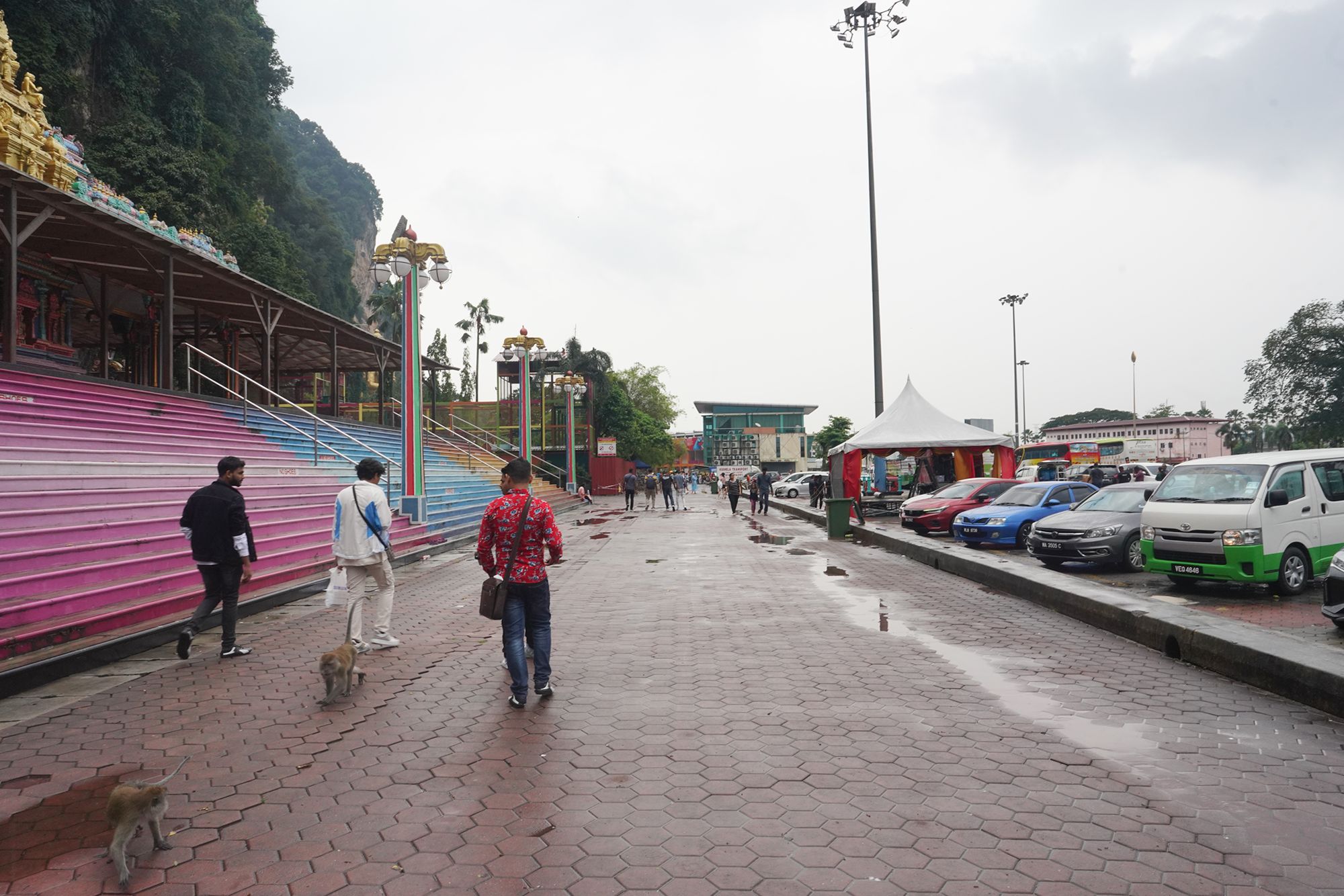





One of the most iconic features of Batu Caves is the 43-meter (140-foot) tall statue of Lord Murugan, which stands at the base of the steps leading up to the Temple Cave. This gold-painted statue is the tallest statue of Lord Murugan in the world and serves as a prominent landmark.

Batu Caves is a sacred site dedicated to Lord Murugan, the Hindu god of war and victory. The main temple within the caves is one of the most important Hindu shrines outside of India, attracting pilgrims and tourists alike.


The site is best known for its 272 steps, which lead up to the entrance of the main cave, known as the Cathedral Cave or Temple Cave.



Back side



Climbed up the stairs



Back side
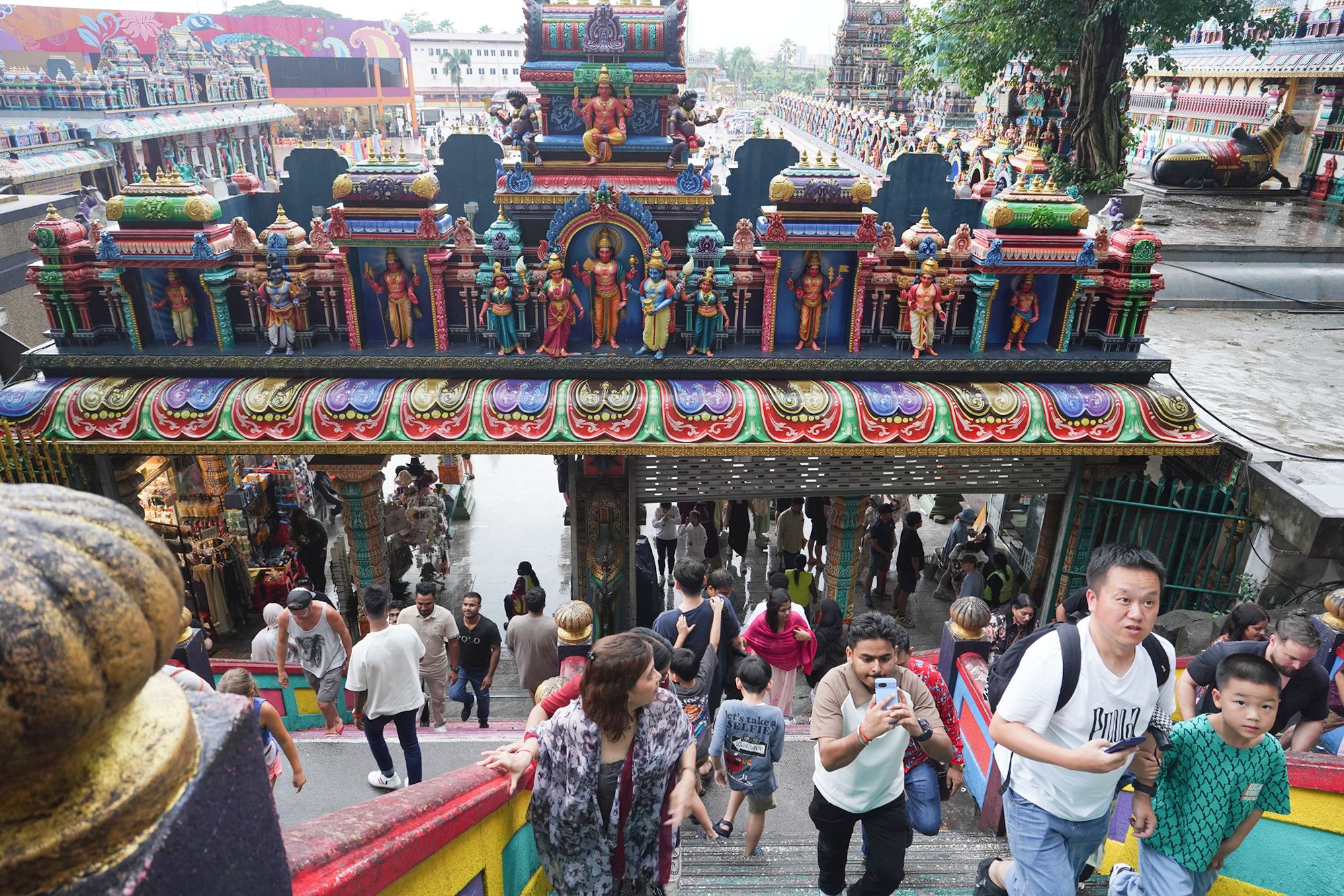


Back side


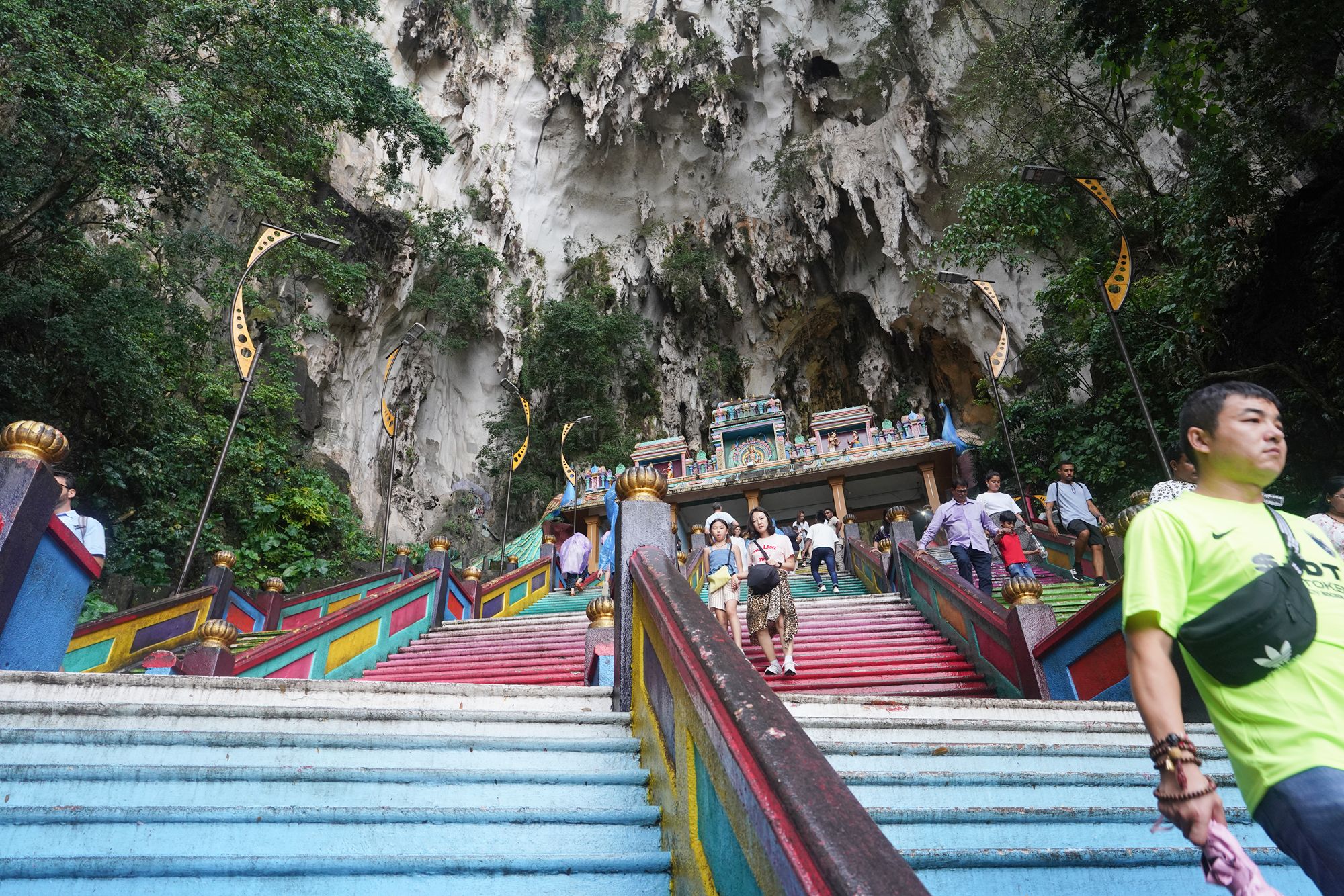

At the top of the stairs

Entered the cave



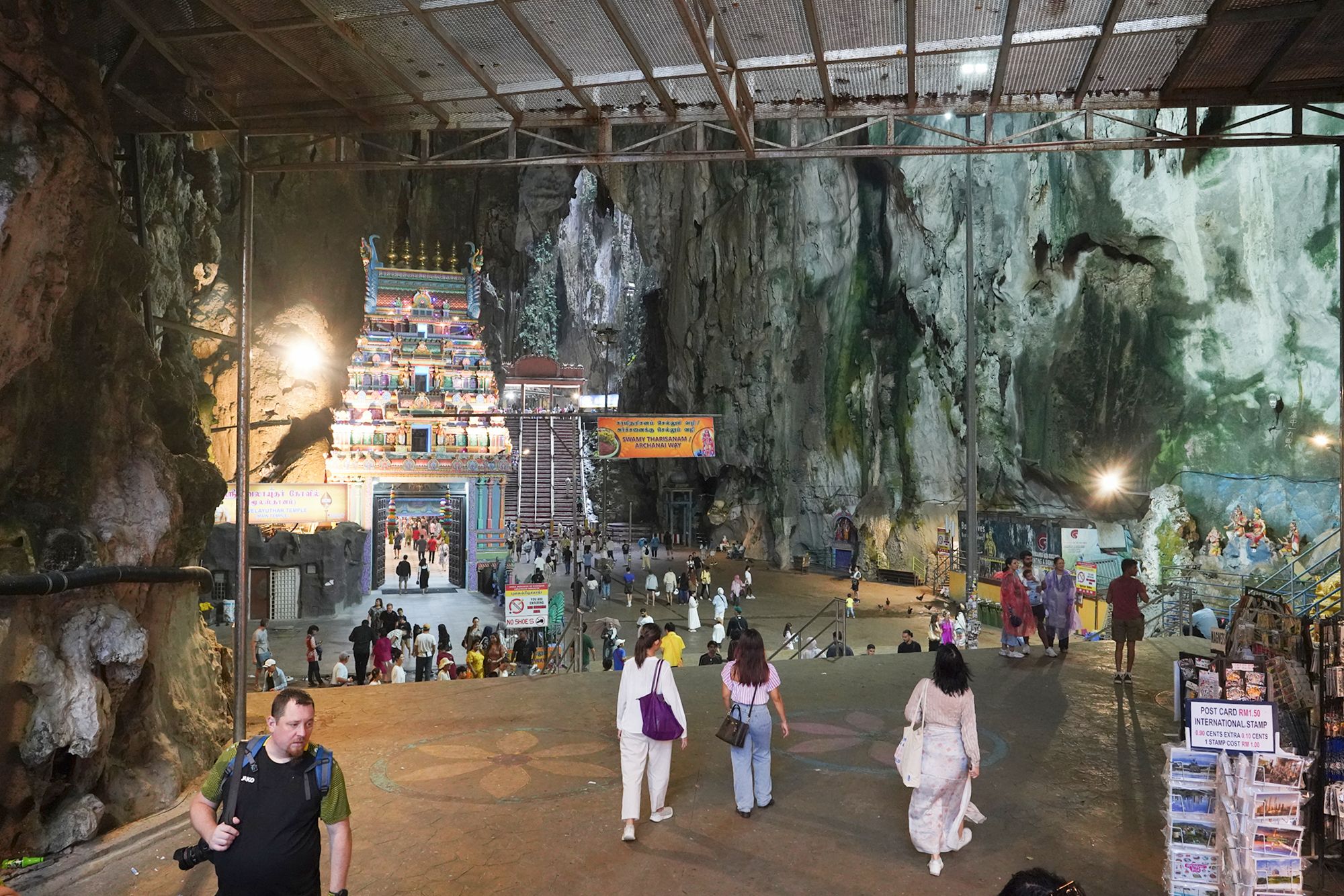
The main attraction is the Temple Cave, located at the top of the 272-step staircase. This large, open cavern houses several Hindu shrines dedicated to Lord Murugan.

The cave is over 100 meters high, and its vaulted ceilings and limestone formations make it a striking place of worship.

At the far end of the cave, there is a natural opening that allows sunlight to stream in, creating a dramatic atmosphere, especially during religious ceremonies.

At the heart of the main cave is the main shrine, which is dedicated to Lord Murugan.

The main temple (shrine) in the Temple Cave (also known as the Cathedral Cave) at Batu Caves was established in 1891. This was when an Indian trader named K. Thamboosamy Pillai installed the first shrine dedicated to Lord Murugan, recognizing the cave’s potential as a holy site for Hindu worship.

The main temple itself, along with the other shrines within the cave, has been expanded and developed over the years. However, the foundation of the worship at Batu Caves and the establishment of the main shrine to Lord Murugan date back to 1891. Since then, Batu Caves has evolved into one of the most important Hindu religious sites in Malaysia, especially with its association with the Thaipusam Festival.







Exited the main shrine
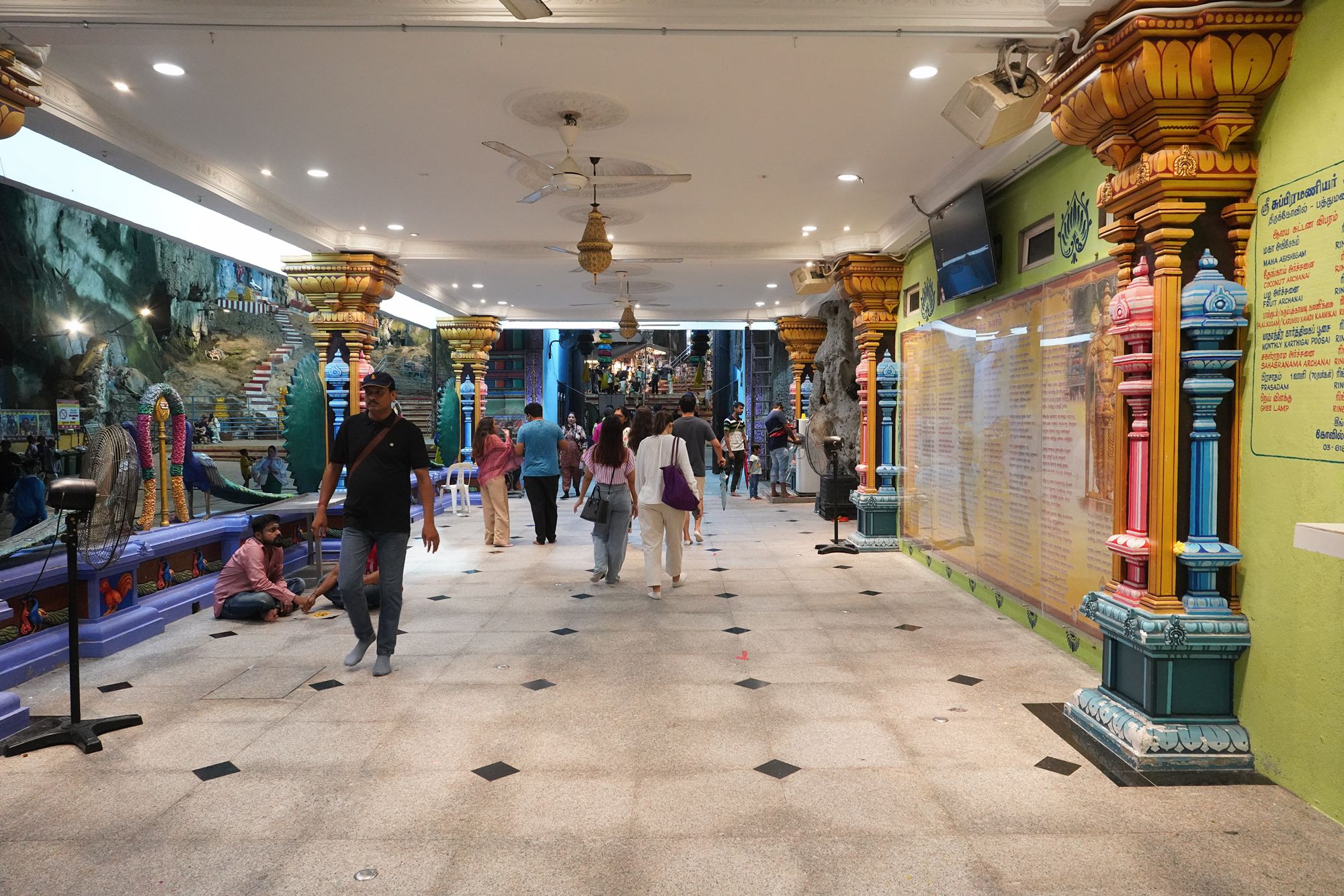



Back side


Visitors can climb an additional set of steps to access the smaller temple area at the back of the main shrine in the Temple Cave. This elevated section provides a more secluded space for worship.
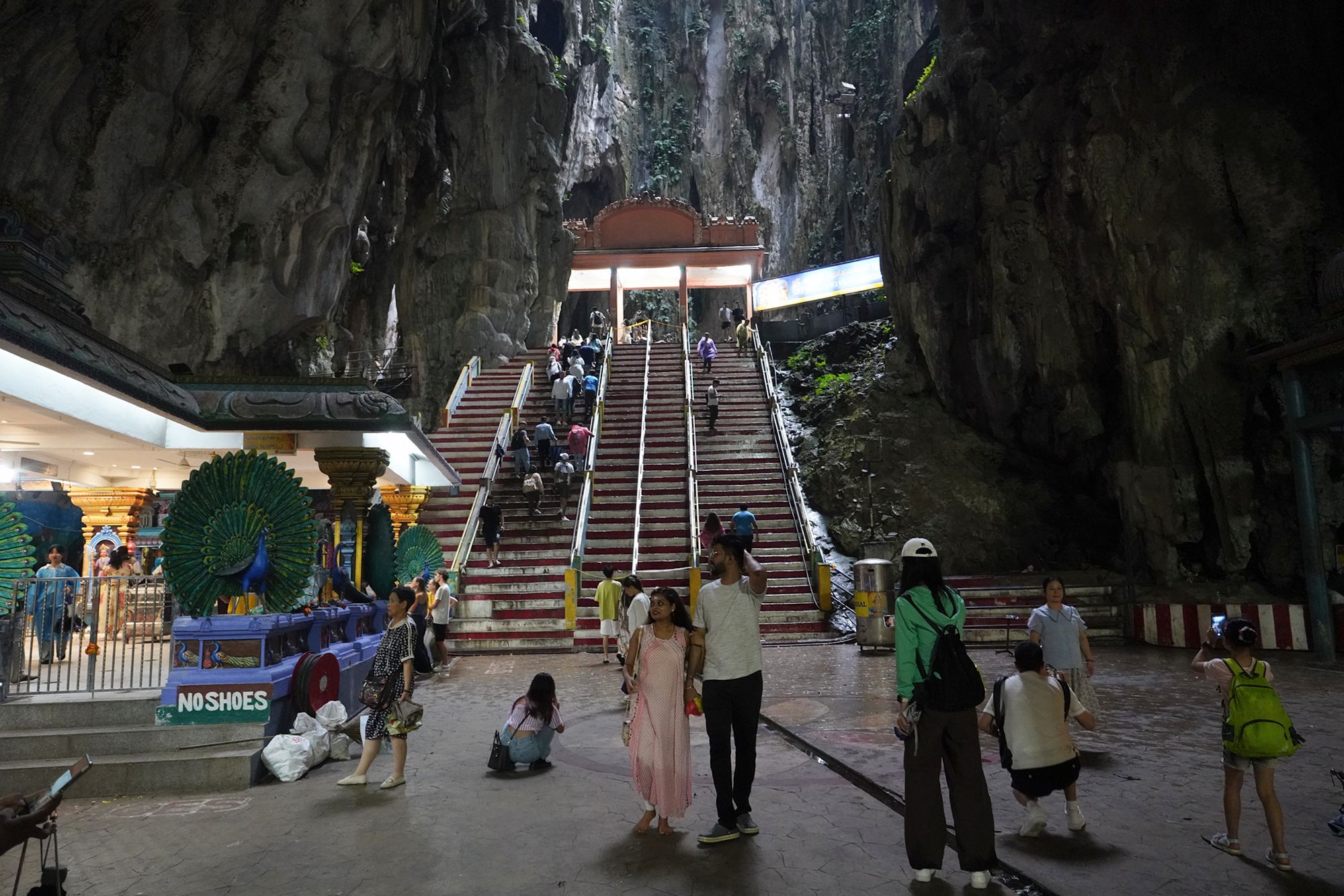



At the top of the stairs is this secondary temple, which includes smaller shrines dedicated to various Hindu gods and goddesses. These offer devotees a quieter and more intimate place for prayer.



The temple at the top of the stairs is positioned near a large natural opening in the cave’s ceiling, allowing sunlight to stream in. This creates a dramatic and serene atmosphere, particularly in the early morning when the light is softer.




Looked back at the main shrine
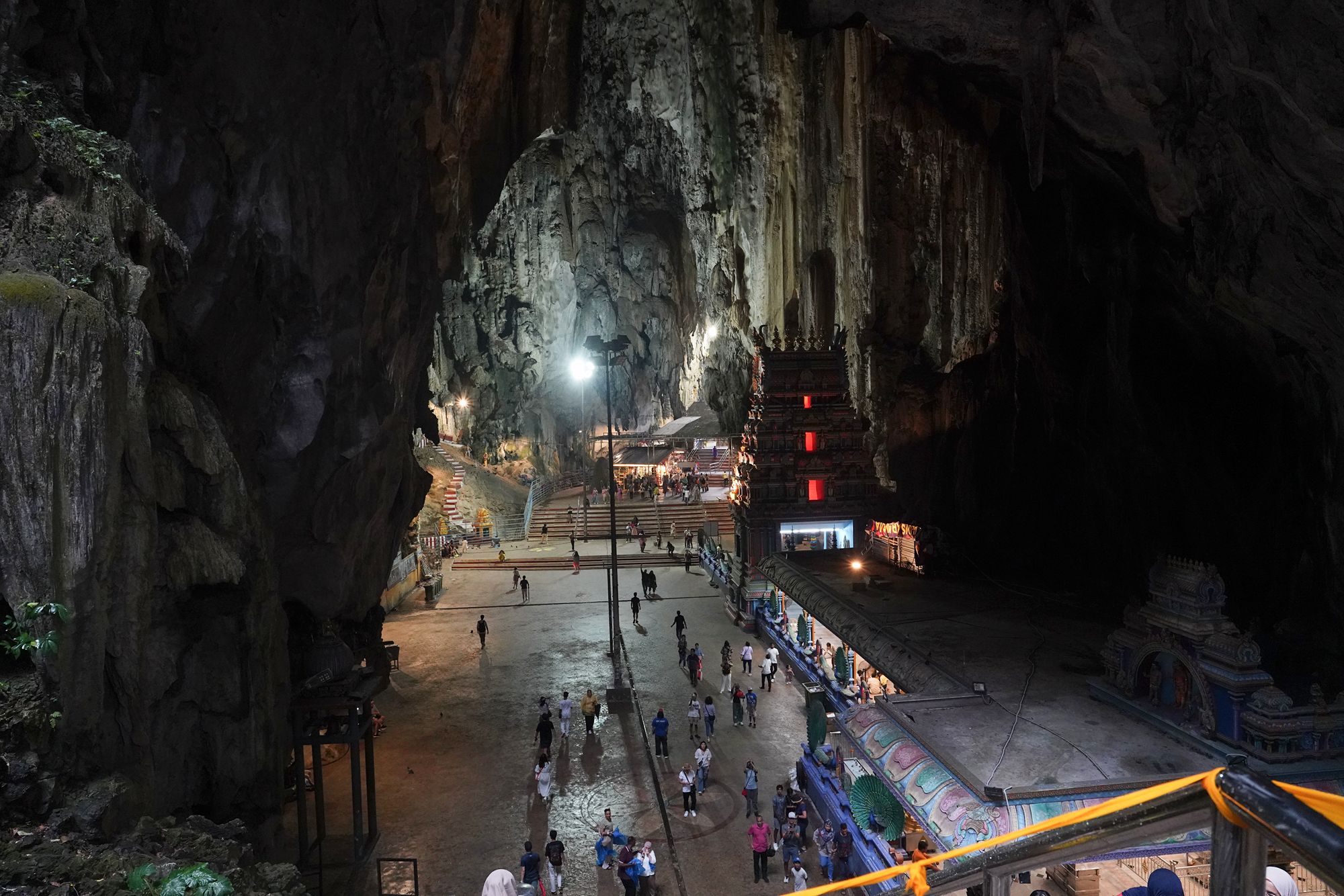

Walked down from the raised platform


Walking out of the cave


Then walked down the stairs











